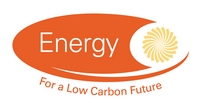Network Capacity - Performance of Onshore Multi-Terminal HVDC: WP2 Tasks 2 & 3
Abstract:
The UK’s electricity transmission and distribution systems have little spare capacity to accommodate the widespread changes in volume and location of power flows arising from planned changes in generation type and characteristics, and from major changes in demand patterns. Gaining consents for the construction of new overhead lines is extremely time-consuming and costly. Without action, this will increasingly constrain the necessary changes in generation and demand.
The ‘Network Capacity’ project has assessed the feasibility of using new technologies now emerging in the marketplace or in development, including multi-terminal HVDC systems, in novel ways in order to provide increased Transmission & Distribution system capacity and improved management of network power flows, in order to facilitate increased renewable energy installation levels in the UK.
This document contains two studies conducted to assess the performance and impact of multi-terminal High Voltage Direct Current systems integrated into the UK’s onshore transmission system:
- Appendix A: TransGrid Solutions Report : Assessment of Performance of Onshore HVDC Systems Integrated into the UK AC Grid (WP2 Task 2; starts on page 12)
This study looked at integrating HVdc technology into the UK grid by converting existing HVac lines into HVdc lines in order to improve the transmission capacity in selected transmission corridors. The outcome of this study is a qualitative assessment that evaluates the performance of the system following the conversion of selected AC lines to Voltage Source Converter (VSC) HVdc and Line-Commutated Converter (LCC) HVdc, and makes a comparison with the performance of the system without the line conversions. Each line conversion scenario therefore compared three schemes: VSC HVdc, LCC HVdc and AC. Schemes were compared exclusively in terms of their relative impact on transmission system performance, rather than on aspects such as cost or environmental impact. - Appendix B: Impact of new onshore multi-terminal HVDC (WP 2 Task 3; starts on page 108)
This report has focused on evaluating the impact of replacing an existing HVAC transmission circuit with an HVDC scheme. As can be seen in section 2.2.3, the required post-fault ratings, for a UK 400 kV double circuit transmission corridor, are in excess of 4 GW. In complying with SQSS specifications, there is negligible benefit of attempting to increase this transmission corridor capacity by replacing it with an onshore HVDC scheme primarily due to economic reasons. The benefits of using an onshore HVDC scheme could be maximised by installing a lowerrating (<4 GW) onshore HVDC cable link in parallel with an existing transmission corridor. However the impact of this application has not been studied as part of this report.
Publication Year:
2010
Publisher:
ETI
Author(s):
Mott MacDonald
Energy Category
Class Name:
Subclass Name:
Category Name:
Language:
English
File Type:
application/pdf
File Size:
2628320 B
Rights:
Energy Technologies Institute Open Licence for Materials
Rights Overview:
The Energy Technologies Institute is making this document available to use under the Energy Technologies Institute Open Licence for Materials. Please refer to the Energy Technologies Institute website for the terms and conditions of this licence. The Information is licensed "as is" and the Energy Technologies Institute excludes all representations, warranties, obligations and liabilities in relation to the Information to the maximum extent permitted by law. The Energy Technologies Institute is not liable for any errors or omissions in the Information and shall not be liable for any loss, injury or damage of any kind caused by its use. This exclusion of liability includes, but is not limited to, any direct, indirect, special, incidental, consequential, punitive, or exemplary damages in each case such as loss of revenue, data, anticipated profits, and lost business. The Energy Technologies Institute does not guarantee the continued supply of the Information. Notwithstanding any statement to the contrary contained on the face of this document, the Energy Technologies Institute confirms that it has the right to publish this document.
Further information:
N/A
Region:
United Kingdom
Publication Type:
Subject:
Theme(s):
Energy Storage and Distribution
Related Dataset(s):
No related datasets
Related Project(s):
Related Publications(s):
An ETI Perspective - Low carbon challenges for UK energy networks
ETI Insights Report - UK Networks Transition Challenges - Electricity
ETI Insights Report - UK Networks Transition Challenges - Gas
ETI Insights Report - UK Networks Transition Challenges - Heat
ETI Insights Report - UK Networks Transition Challenges - Hydrogen
Enabling efficient networks for low carbon futures: Options for governance and regulation
Infographic - UK Networks Transition Challenges
Network Capacity - Barriers to Application of Multi-Terminal HVDC in the UK: WP2 Task 4
Network Capacity - Executive Summary
Network Capacity - Final Project Summary (Work Packages 1 & 2 a.k.a. WP1 Task 8)
Network Capacity - One Page Summary
Network Capacity - Request for Proposal
Network Capacity -WP1 Task 2: Impact of Active Power Flow Management Solutions
Options Choices Actions - UK scenarios for a low carbon energy system



